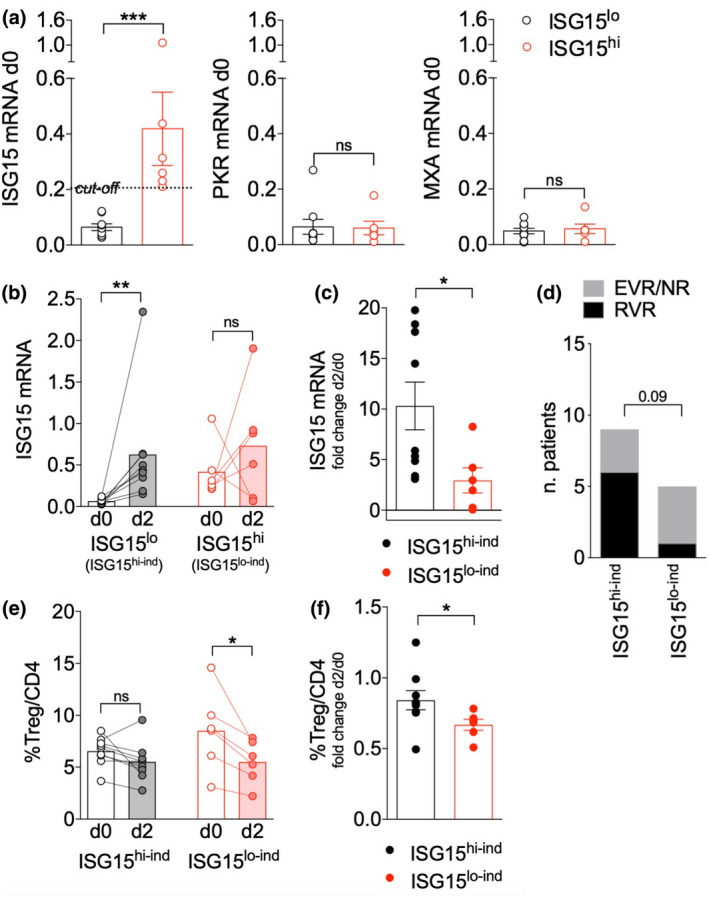Figure 1.

ISG15 induction correlates with protection from Treg depletion in response to IFN therapy in chronic hepatitis C (CHC) patients. (a) Real‐time PCR for ISG15, PKR and MXA was performed in peripheral blood mononuclear cells (PBMCs) from 15 CHC patients at day 0 (before starting pegIFN/ribavirin therapy), and patients were stratified into ISG15lo (n = 9) and ISG15hi (n = 6) using the average ISG15 expression level (0.206) as cut‐off. Means ± SEM of ISG15, PKR and MXA expression levels (2−ΔCt relative to GAPDH) are shown in the two subgroups. ***P < 0.005, by the Mann–Whitney U‐test; ns, not significant. (b) ISG15 expression was assessed in PBMCs of ISG15lo (ISG15hi‐ind) and ISG15hi (ISG15lo‐ind) CHC patients, stratified as detailed above, at day 0 (day 0) and day (day 2) of pegIFN/ribavirin therapy. **P < 0.01, by the Wilcoxon matched‐pairs test; ns, not significant. (c) Fold change in ISG15 mRNA was calculated as the day 2/day 0 ratio. *P < 0.05, by the Mann–Whitney U‐test. (d) The chi‐square test was applied to analyse the difference between ISG15hi‐ind and ISG15lo‐ind in terms of rates of RVR versus EVR/NR, stratified according to the response to pegIFN/ribavirin therapy at short‐term follow‐up as previously described. 16 (e) Treg frequency was evaluated in CHC patients, at day 0 and day 2 of therapy, as the percentage of FOXP3+ CD127lo in gated live CD14− CD4+ PBMCs. *P < 0.05, by the Wilcoxon matched‐pairs test; ns, not significant. (f) Fold change in Treg frequency was calculated as the day 2/day 0 ratio. *P < 0.05, by the Mann–Whitney U‐test.
